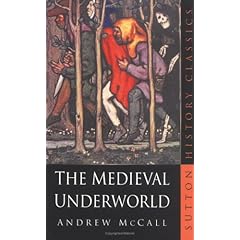By John M Morris, Ph.D.
I was introduced to Zen Buddhism as a theological student in Berkeley, California, many years ago. Since then I've drifted into Inca Shamanism, Starhawk's eclectic witchcraft, trance drumming, and much else, but I've recently returned to Zen as a way of discovering a deeper spirit than anything found in the doctrinal religions.
My first teacher in Zen was Alan Watts, in San Francisco, whose radio addresses on KPFA, his classes, and his lectures at the Church for the Fellowship of All Peoples opened the door to a new way of defining a non doctrinal formm of religious practices.
Watts, a former Anglican priest, had his own take on Zen, making it muuch more attractive to most of us than a complex Oriental curiosity.
Not far away there was another huge church with thousands of people shouting "amen" to a relevant sermon.
Zen is much quieter, of course. We are invited to meditate in silence, blocking out the noise and confusion around us. Zen invites us to ignore theology, those doctrines that divide us, and to come to terms with the vast emptiness at the heart of this churning world.
I remember at one time, when I was studying for a doctorate in philosophy, wondering at the way in which a philosophical puzzle could breed hundreds of pages of charges and counter-charges, leaving the original problem unsolved. Surely the many religious disputes going on around us are no better. "Does a dog have Buddhia nature?" Answer: "Woof woof."
Intense meditation has the effect of clearing the mind. Eventually there comes the moment of satori, a moment when our day-to-day problems are not solved but are left behind. As one great mystic, William Blake, put it, "When the doors of perception are cleansed, we shall see everything as it is, infinite." Or my favorite, Walt Whitman: "When I heard the learn'd astronomer" with his many calculations, I left the lecture hall and "looked with simple silence at the stars."
Like Thoreau, who wanted to "settle myself, and sink my feet downward, through the mud and slush of time" until he finds solid earth under his feet, and can say "this is reality and no mistake," Zen is looking for the reality that lies under the mud and slush of ordinary perception. But for the Zen master, Thoreau is perhaps as far as any of us from discovering the reality of this world.
When you read a collection of Zen meditations, you may find it confusing, since there is no doctrine here, no set of "teachings." For the Zen student is alone in the world. Each person is a seeker. It is that constant seeking for a truth that is before your eyes that makes Zen a companion for your journey that goes deeper and deeper into reality that we can find only for ourselves, but only as the seeking is something that we undertake with full commitment. Zen is not for a lazy person.
Unlike many religious traditions, Zen has no doctrine, no rules, no specific practices. Instead it is a way of goiing beyond all rigid belief systems, coming to terms with their underlying reality.
One way of clearning the mind of its thousand distractions is the koan, a simple riddle or story that has no real answer. "If two hands clapping make a slapping sound, what does one hand clapping sound like?" Of course there is no answer, and that is the point. Most of our philosophical and religious problems are those with no answers that make any sense.
Tuesday, December 11, 2007
The Yen for Zen
Our First Ritual
by John M Morris, Ph.D.
We held our first Pagan ritual in the basement of the old Unitarian Church in Ann Arbor in 1950. This was before Starhawk, and the other founders of American Witchcraft were even born, so we were pretty much on our own. The only useful reference book that I could find was a battered copy of an older text, now discredited, by Margaret Murray, Witchcraft in Western Europe, which attempted to reconstruct the ancient witchcraft rituals in England. It was out of these obsolete rituals that I devised our own ritual.
One of the first obstacles was finding a Priestess, who would be lying naked on the altar, definitely a requirement for reconstructing an authentic Pagan ritual. The most likely candidate flatly refused to appear before the congregation without any clothes on, and after a good deal of debate, one of our friends reluctantly agreed to make her a robe, out of an old pillowcase. He painted a few obscene symbols on it, and it worked out very well.
For myself, I volunteered to preach the sermon. Now, as far as we know, there were no sermons at the classical witchcraft gatherings, but we didn't know that, so I devised rather a noisy address to deliver during our Pagan ritual. I've forgotten most of it, but it seems to have been a diatribe against our non-Pagan neighbors, who, as we imagined it, were persecuting us, and forcing us to hold our rituals in the basement, "our masses in the cold, cold ground."
Our little proto-coven went on to hold other rituals, but none seem to have been as impressive as this one. Other leaders have appeared, and hundreds of books have been written, but contemporary witches have never produced anything more dramatic than our first ritual, in the dark, candle-lit basement of that little church.
Saturday, December 01, 2007
Book review:
By John M. Morris, PhD.
 Andrew McCall The Medieval Underworld New York: Barnes & Noble (reprint), 1993. 319 pp., n.p.
Andrew McCall The Medieval Underworld New York: Barnes & Noble (reprint), 1993. 319 pp., n.p.
 Andrew McCall The Medieval Underworld New York: Barnes & Noble (reprint), 1993. 319 pp., n.p.
Andrew McCall The Medieval Underworld New York: Barnes & Noble (reprint), 1993. 319 pp., n.p.
This classic study, first published in 1979, pictures the incredible chaos that swept through Europe in the late Middle Ages, as the older Catholic paradigms were collapsing and wave after wave of craziness were taking their place. McCall introduces us to the world of prostitutes, homosexuals, religious heretics, Jews, and sorcerers and witches that appeared in great waves during the Tenth to Fifteenth Centuries in Europe, horrifying the church fathers and attracting great crowds, only to end up on the gallows or the chopping block.
My primary interest was in the sorcerers and witches, who were savagely attacked by the powers that be, and often driven out of the cities or sent to the executioners, although many were able to live fairly peaceful lives through this period. McCall's descriptions of the witches are quite different from those pictured in one of my favorite texts, "The Witch Cult in Western Europe," now sadly discredited and largely forgotten (I loaned my copy to a friend, who has since disappeared with it). In this earlier study, witches are pictured as joyously gathering in their covens to celebrate the sabbats and the esbats, keeping cats, toads, and other animals as pets, and, most importantly, acting as healers and comforters in their communities.
In McCall's study, however, witches are accused of cursing their neighbors out of spite, and are put on trial for heresy. Punishments were varied but often included horrible tortures, with their forced confessions to hideous deeds, and execution of the alleged witches. McCall's book, however, helps to put the witch trials into some kind of focus, since the witches were only one group to be attacked during those fanatical centuries. I would hope that our own century will be better. It could hardly be worse.
Subscribe to:
Posts (Atom)




